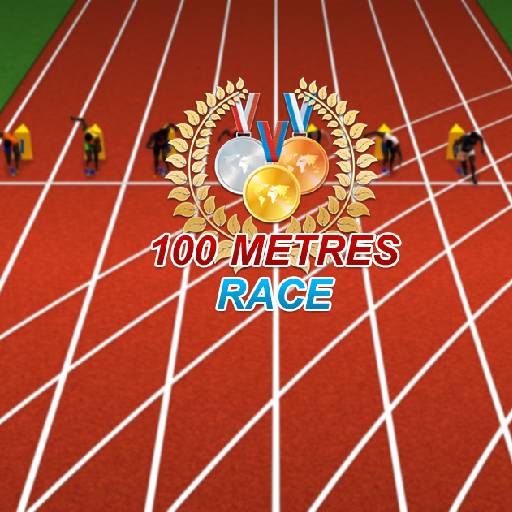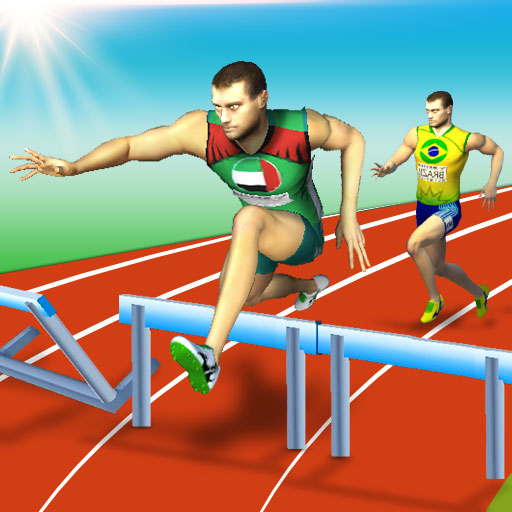Similar Games

100 Meters Race
How To Play
The 100 Meters Race
The 100 meters race is widely regarded as one of the most thrilling events in athletics. Known for its intensity, speed, and drama, this short-distance sprint has captured the attention of fans worldwide for decades. The event showcases the pinnacle of human speed, where even milliseconds can determine the winner. This article delves into the origins, rules, techniques, training methods, and the significance of the 100 meters race in the sporting world.
The History of the 100 Meters Race
The roots of the 100 meters race trace back to ancient times, where footraces were common in many cultures. However, the modern version of the race emerged in the late 19th century when athletics began to formalize as a sport. The first recorded 100 meters race in a structured competition occurred in 1896 during the inaugural modern Olympic Games held in Athens.
Over the years, the 100 meters event evolved in terms of technique, training, and timing accuracy. The race became an Olympic staple and the crown jewel of track and field competitions. Its prestige grew further with advancements in timing technology, allowing for more precise measurement of performances. Iconic sprinters like Jesse Owens, Carl Lewis, Usain Bolt, and Florence Griffith-Joyner have cemented their legacies through their performances in this event.
Rules and Format of the Race
The 100 meters race is deceptively simple in its format, yet it demands a high level of precision and adherence to rules. Athletes must start from a set position within their designated lanes on a straight track. The race begins when the starting gun is fired, and false starts can result in disqualification, emphasizing the importance of concentration.
Athletes are required to stay within their lanes throughout the race. Stepping out of the lane can lead to disqualification, making spatial awareness critical. The winner is determined by the first athlete to cross the finish line, with the torso (not arms or legs) being the deciding factor.
Timing systems have progressed from manual stopwatches to fully automated systems, ensuring accuracy down to the millisecond. This precision has become crucial in differentiating between athletes in closely contested races.
Key Techniques for Success
Success in the 100 meters race hinges on mastering several technical aspects. The start, acceleration, top speed maintenance, and finish are all critical phases of the race.
The start is often considered the most crucial part of the race. Athletes must react quickly to the starting gun and explode out of the blocks with optimal force and technique. The initial strides set the tone for the race, as a poor start can be difficult to recover from.
Acceleration is the next phase, where sprinters transition from their explosive start to reaching their top speed. Proper posture, stride length, and frequency are essential during this phase. Sprinters aim to hit their maximum speed as efficiently as possible, minimizing energy wastage.
Maintaining top speed requires a combination of strength, endurance, and technique. Most athletes reach their peak velocity around the 60-meter mark, after which they must work to sustain their speed while resisting deceleration.
The finish demands precision and focus. Many races have been won or lost in the final meters, where athletes must lean at the finish line to maximize their chances of crossing first.
Training Regimens for Sprinters
The 100 meters race demands a unique combination of explosive power, speed, and endurance. Training programs for sprinters are meticulously designed to enhance these attributes while minimizing the risk of injury.
Strength training plays a vital role in building the muscular power needed for explosive starts and sustained speed. Exercises like squats, deadlifts, and power cleans are staples in a sprinter’s training routine. These exercises target the lower body and core muscles, which are crucial for generating force during the race.
Speed drills and plyometric exercises are integral to improving stride frequency and explosive strength. Sprinting with resistance, such as weighted sleds or parachutes, helps develop acceleration and power. Plyometric exercises, like box jumps and bounding drills, enhance an athlete’s ability to generate force quickly.
Flexibility and mobility exercises are also essential for preventing injuries and improving stride efficiency. Stretching routines, yoga, and dynamic warm-ups help maintain optimal range of motion and reduce muscle stiffness.
Mental preparation is equally important. Visualization techniques, goal setting, and mindfulness training can help athletes stay focused and perform under pressure. Many top sprinters work with sports psychologists to refine their mental game.
Records and Legends of the 100 Meters
The 100 meters race has produced some of the most memorable moments in sports history. The world records in this event are among the most celebrated achievements in athletics.
The men’s world record currently stands at 9.58 seconds, set by Usain Bolt at the 2009 World Championships in Berlin. Bolt’s dominance in the event, with his combination of speed, stride length, and charisma, has made him a global icon.
On the women’s side, Florence Griffith-Joyner’s record of 10.49 seconds, set in 1988, remains unbeaten. Known for her flamboyant style and unmatched speed, Griffith-Joyner redefined women’s sprinting during her career.
These records highlight the remarkable capabilities of human performance and inspire future generations of sprinters to push the limits of what is possible.
Cultural and Global Significance
The 100 meters race holds a special place in global sports culture. As the most-watched event in the Olympic Games, it symbolizes the pursuit of excellence and the celebration of athletic achievement. Winning the 100 meters race earns athletes the unofficial title of “the fastest person on Earth,” a distinction that carries immense prestige.
The event also serves as a platform for showcasing diversity and breaking barriers. Sprinters from various countries and backgrounds compete on the world stage, uniting fans across the globe. The race has often been a stage for political statements, social change, and moments of inspiration.
The Science Behind Speed
Advancements in sports science have played a significant role in improving performances in the 100 meters race. Biomechanics, nutrition, and recovery strategies are now integral components of a sprinter’s preparation.
Biomechanical analysis helps athletes optimize their running form, minimizing energy wastage and maximizing speed. High-speed cameras and motion-capture technology allow coaches to analyze an athlete’s stride, posture, and movement patterns in detail.
Nutrition is another critical factor. Sprinters require a balanced diet rich in protein, carbohydrates, and healthy fats to fuel their training and recovery. Supplements like creatine and beta-alanine are often used to enhance performance and muscle recovery.
Recovery strategies, including massage, cryotherapy, and active recovery sessions, are essential for maintaining peak performance. These methods help reduce muscle soreness and prevent injuries, allowing athletes to train consistently.
Challenges and Controversies
Despite its popularity, the 100 meters race has not been without challenges and controversies. Doping scandals have marred the event, raising questions about fairness and integrity. The use of performance-enhancing drugs has led to the disqualification of athletes and tarnished the reputation of the sport.
Technological advancements, such as the development of carbon-fiber track surfaces and advanced running spikes, have also sparked debates about whether they provide an unfair advantage. Balancing innovation with the preservation of traditional values remains a challenge for the sport.
The Future of the 100 Meters Race
As the sport continues to evolve, the 100 meters race will remain a centerpiece of global athletics. Innovations in training techniques, technology, and sports science are likely to push the boundaries of human performance further.
Emerging talents from around the world promise to keep the event exciting and competitive. The increasing participation of female athletes and the rise of athletes from non-traditional sprinting nations are expanding the diversity of the competition.
















































